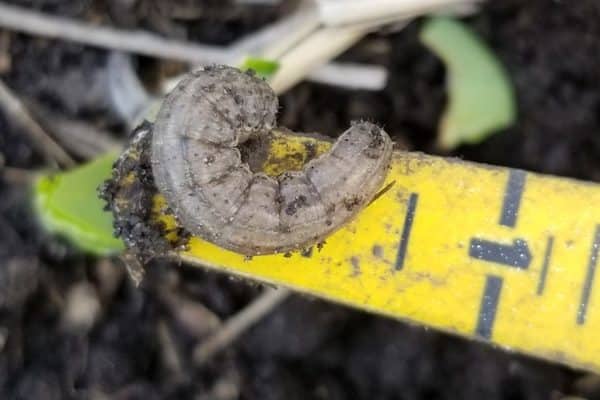
Some species even feed on turfgrass.Īdult moths are nocturnal and will lay their eggs on vegetation, or on moist ground surrounding plants, and the cut worm caterpillar larvae will hatch anywhere from 3-24 days after being laid and begin feeding almost immediately on vegetation near the ground. In many climates, cutworms will winter just under the soil (typically within 1-2 inches of the surface) either as a final instar larvae, or as a pupae.Īs mentioned above, because of its feeding habits, the cutworm isĬutworms feed on a variety of plants, including asparagus, beans, cabbage, kale, rutabaga and other crucifers, as well as corn, celery, lettuce, peas, peppers, and tomatoes. Most readily identified for their characteristic of curling into a It greatest length, a cut worm will reach up to two inches (40 (though they may appear in more bright and vivid forms as well). Uniform in color, or spotted and striped. The moth they will eventually morph into, cutworms, may appear Pink, gray or black, yet most often appear green, brown or gray. May vary in appearance, ranging in color from tan or green to even Though some cutworms will remain eating the remaining fallen plant, most often the cutworm will move on to another stem rather quickly, thus causing a rather disproportionate amount of damage to crops when compared to the actual size of the pest or infestation. Some cutworms will cut off a plant from underneath the soil, causing the rest of the plant to shrivel and die. Typically, a young cutworm will begin feeding on the first part of a plant they encounter (usually the stem) and devour until the stem is felled or cut in half. They were given the moniker “cutworm” because of their voracious appetite and subsequently, their ability to cut down young plants as they feed at the stem or below the surface. We will discuss the best methods here.Ĭutworms are found worldwide, and are actually the larvae (or caterpillars) of numerous species of night flying moths from the Noctuide family. Methods for controlling and curtailing the presence of cutworms in


Very common, and potentially quite devastating, there are numerous

Garden has likely encountered the dreaded pest the cutworm. Who has spent time planting and caring for an outdoor vegetable


 0 kommentar(er)
0 kommentar(er)
